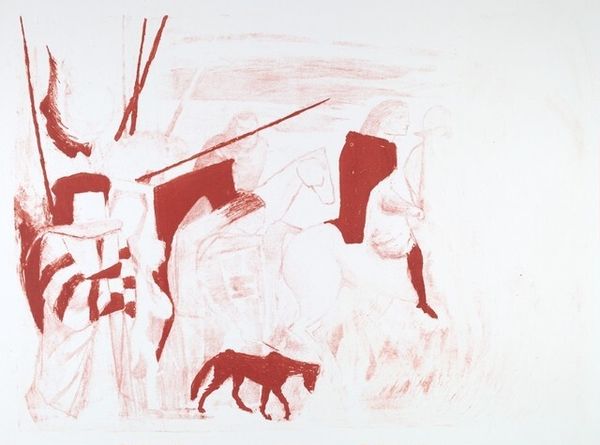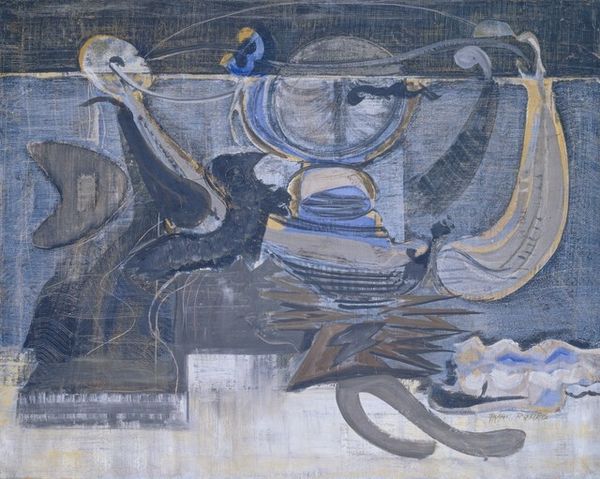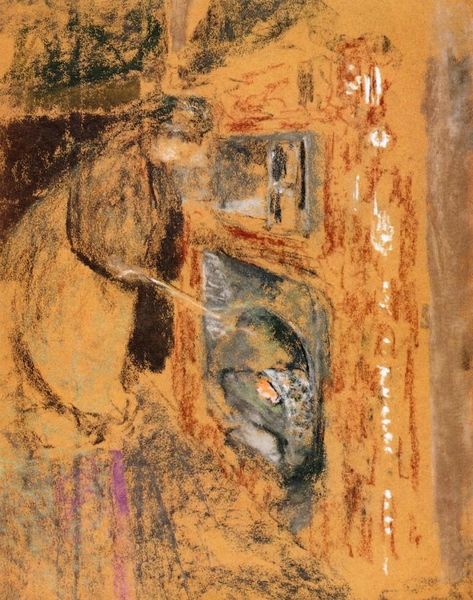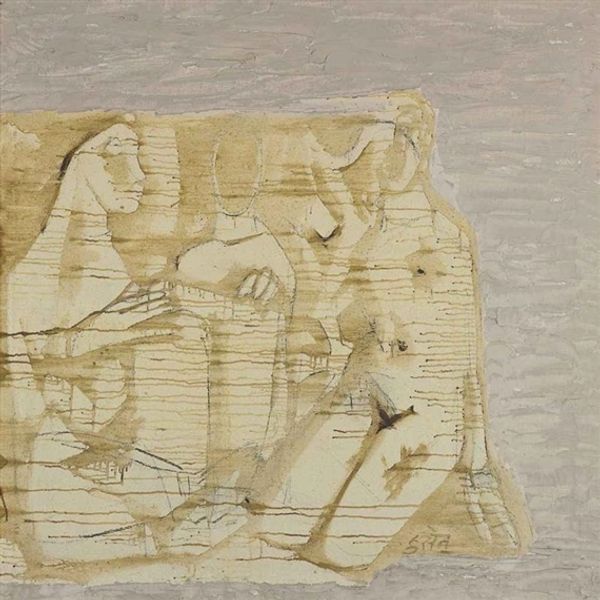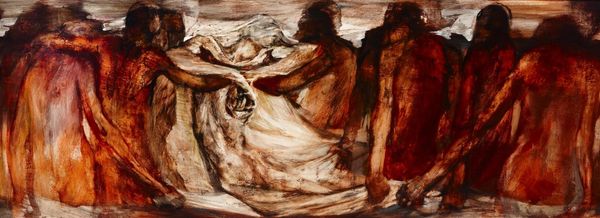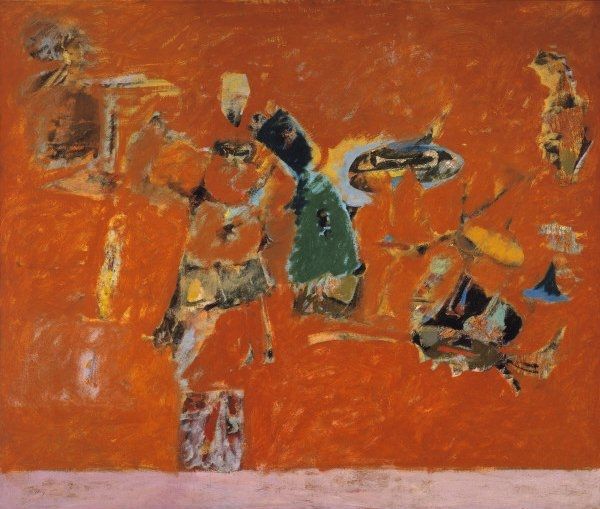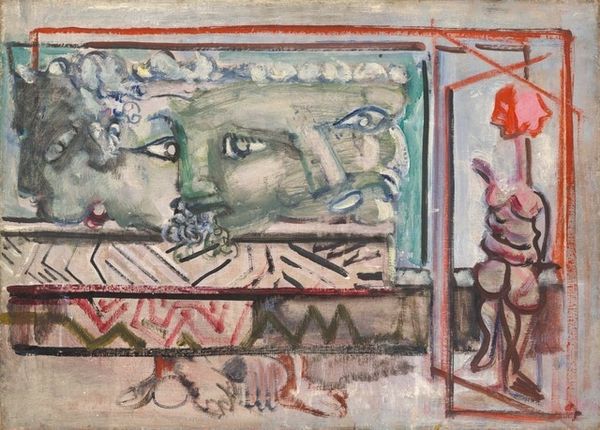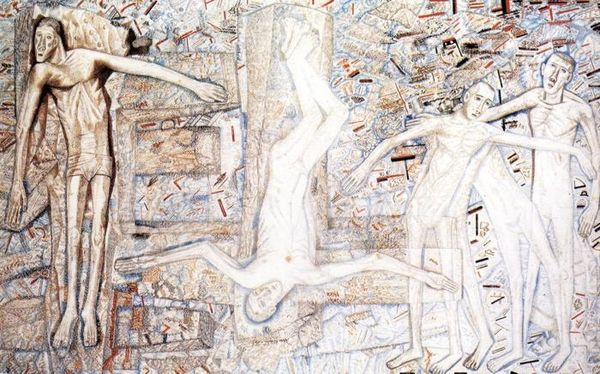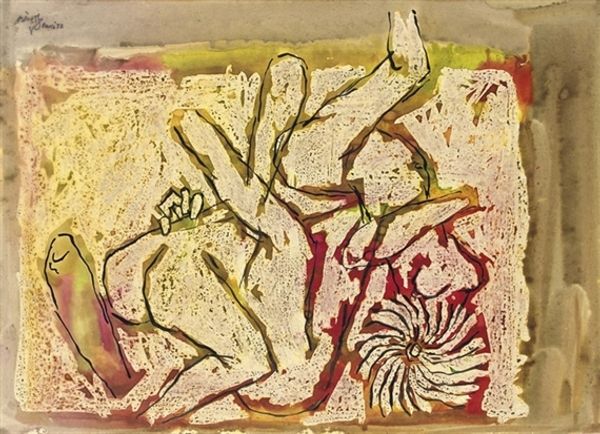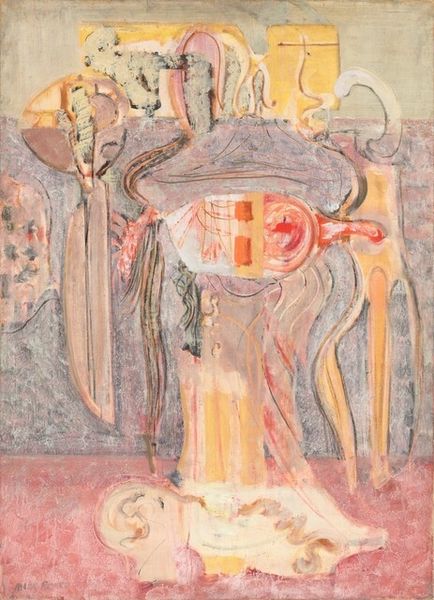
painting
#
abstract-expressionism
#
abstract painting
#
rough brush stroke
#
painting
#
painted
#
form
#
underpainting
#
paint stroke
#
abstraction
#
painting painterly
#
line
Dimensions: overall: 101.6 x 127.1 cm (40 x 50 1/16 in.) framed: 104.9 x 131.8 x 7.5 cm (41 5/16 x 51 7/8 x 2 15/16 in.)
Copyright: National Gallery of Art: CC0 1.0
Editor: Here we have Mark Rothko's "Vision at End of Day" from 1946, a painted abstraction that's giving me some serious end-of-the-world vibes... but like, a beautiful, poignant apocalypse. What's your take? Curator: Apocalypse now, maybe! Seriously though, for me, it's less literal fire and brimstone and more about that delicious tension between presence and absence, a twilight moodiness where things seem to melt into feeling. Don't you see how forms emerge, threaten to resolve, and then dissipate back into the underpainting? It’s almost like a visual poem about impermanence. What kind of stories do you think this style communicates to an audience, then? Editor: Well, I see the way Rothko uses a raw, seemingly unplanned style of abstract expressionism with lines that just appear randomly. He builds a complex layering between rough strokes and the original paint beneath it. So I guess the story could be chaos... and perhaps he does want us to feel the world is just spontaneously erupting. But why the rough quality to it? Why doesn't Rothko resolve anything? Curator: Aha! Because resolution would be a lie. We're talking about post-war anxiety here, a time when clear answers were in short supply. Rothko’s genius was in tapping into that collective unease and giving it form—or, perhaps more accurately, a lack of it. These aren't landscapes in the traditional sense, but internal landscapes, the geography of the soul after trauma. It asks more questions than it answers, and that's what makes it resonate. I imagine there were great emotional upheavals at that time that this communicates and expresses to future generations who can see them visually on a canvas. Do you agree? Editor: Definitely. I mean, I didn’t think about it that way at first but his "unresolved" expression style kind of reflects those inner unresolved, conflicted feelings, like he has a vision of... something, but it's beyond language or perfect forms. So the "Vision" in the title is not what is actually physically, tangibly SEEN! Very cool. Curator: Exactly. Rothko offers more a felt experience than something easily understood. Maybe that’s where its power lies, in leaving us slightly off-balance, searching for meaning in the echoes. So much of what we see with art is an actual reflection on what we DON'T see in our physical surroundings and that in itself makes these so much more profound. Editor: I'll definitely be seeing this piece in a new light now! Thanks for that insight.
Comments
No comments
Be the first to comment and join the conversation on the ultimate creative platform.


